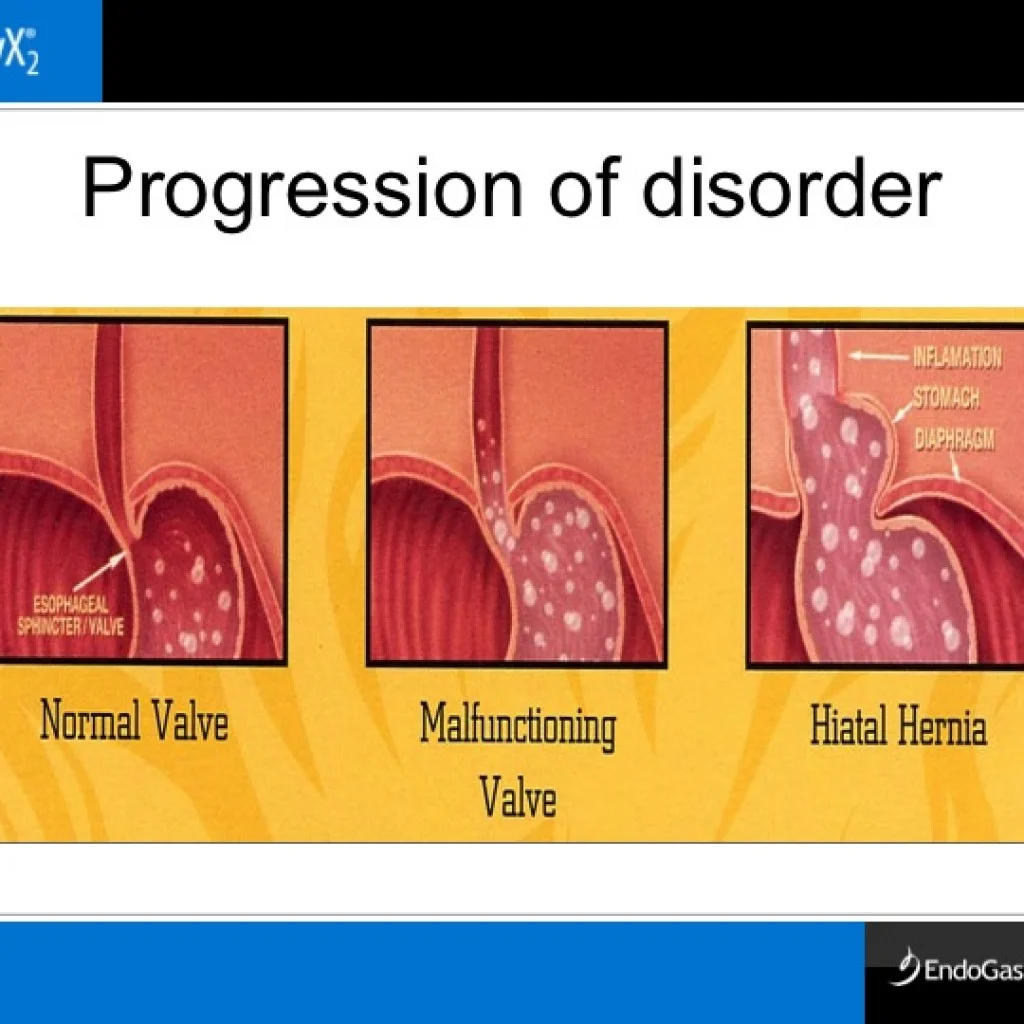A hiatal hernia occurs when the stomach and esophagus slide up through the diaphragm into the chest. This hernia occurs inside the abdominal compartment and is not related to the abdominal wall like other hernias in this section but we have included it here because of the confusion that patients have about it.
It is not a hernia in the abdominal wall just below the sternum as many patients presume. Sometimes pain is experienced in that area but it is not where the defect occurs. Typical hiatal hernia symptoms are heartburn or Gastroesophageal Reflux Disease (GERD) and difficulty swallowing (dysphagia).
Types of Hiatal Hernia
Sliding Hiatal Hernia: In this most common type of hernia, the herniated portion of the stomach slides back and forth, into and out of the chest. This type of hernia can be asymptomatic but it is often related to reflux symptoms. With time it may grow large enough to create pressure and tightness in the chest that can be frightening to patients. These are also called Type I hiatal hernias
Paraesophageal Hernia: This type of hernia is a more complicated defect that occurs when part of the stomach is squeezed up into the chest beside the esophagus. They are described in terms of the degree of anatomic derangement as Type II, III and IV. These types of hiatal herniation are more prone to “strangulation” and may need to be repaired to prevent the need for emergency surgery.



